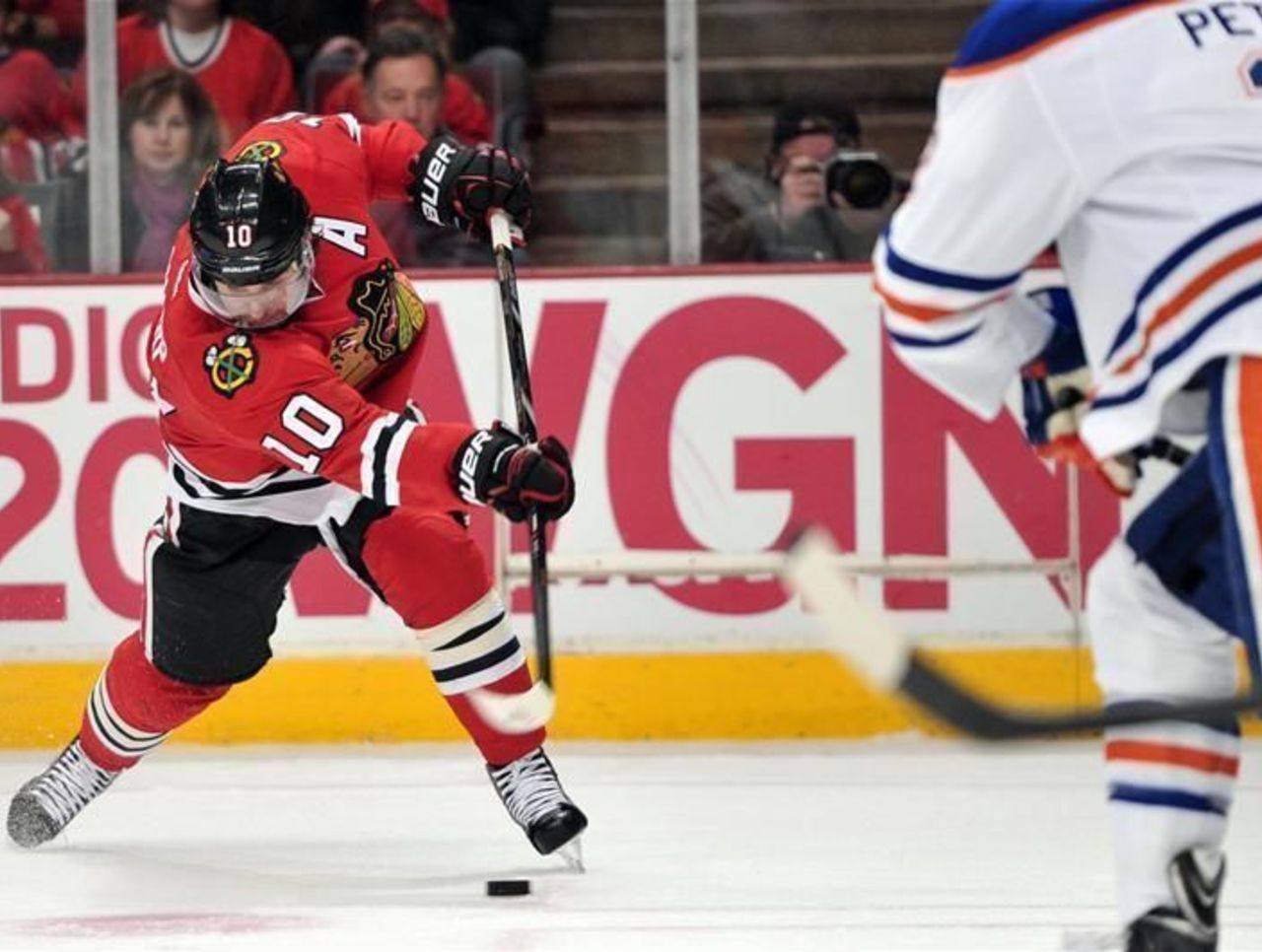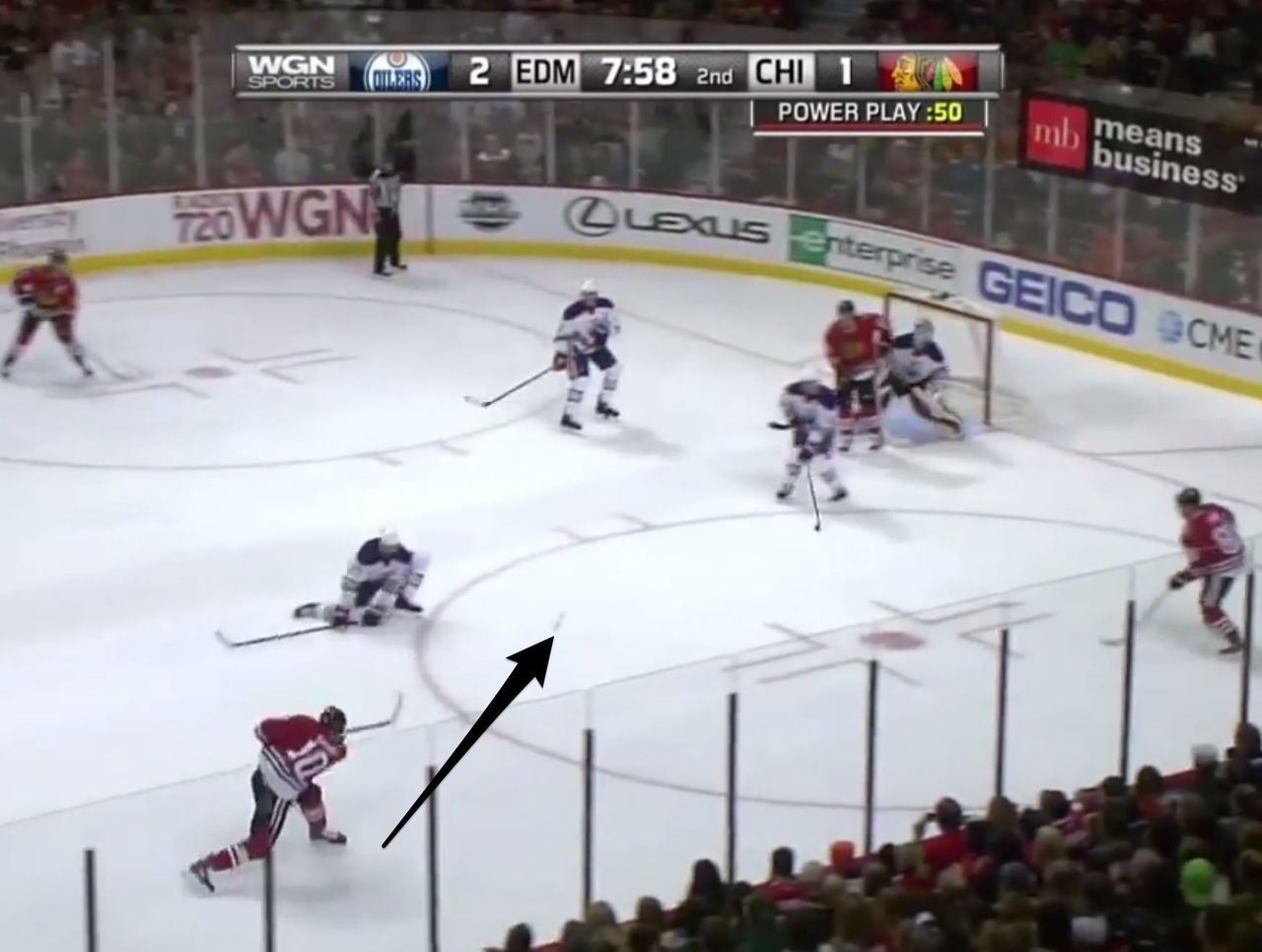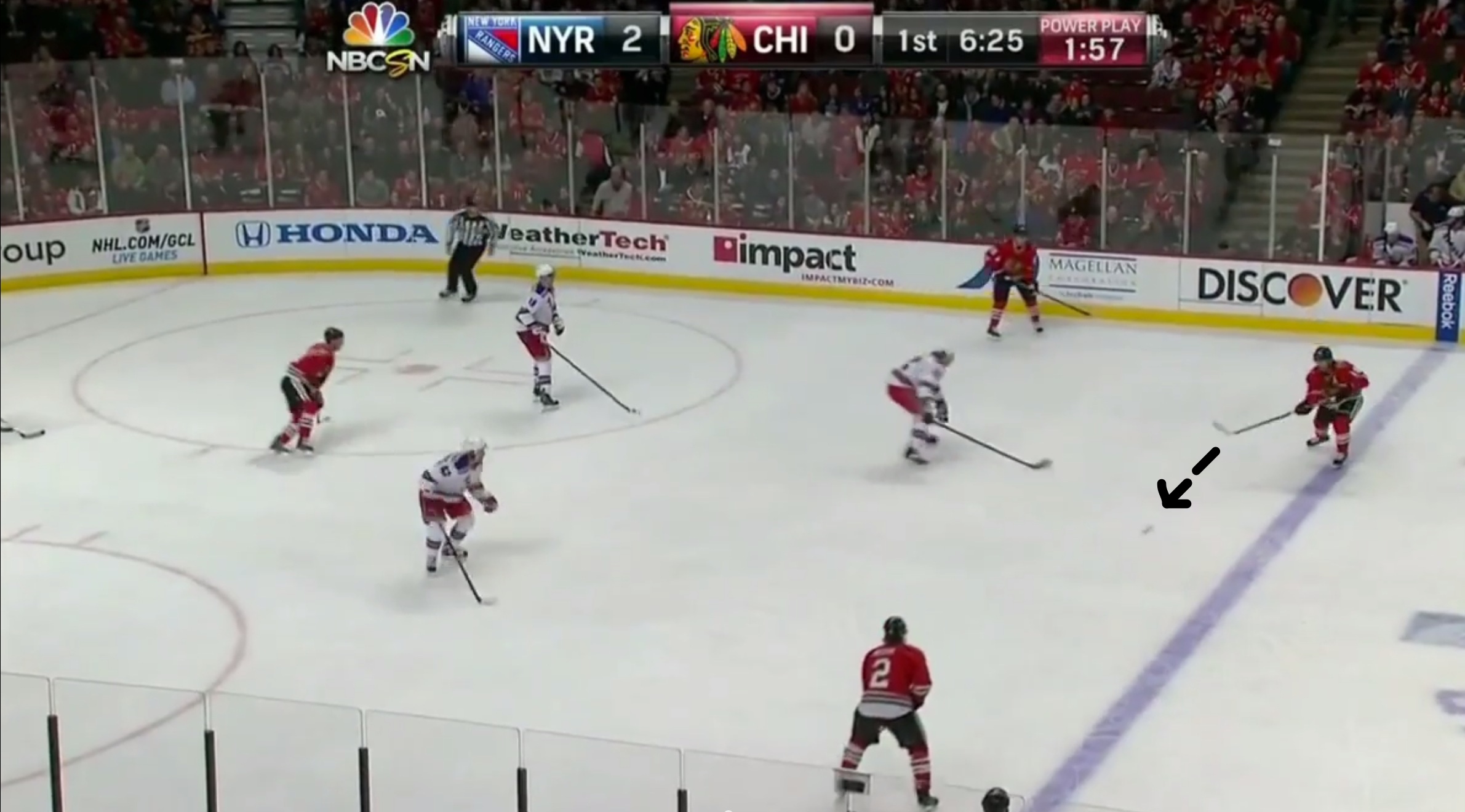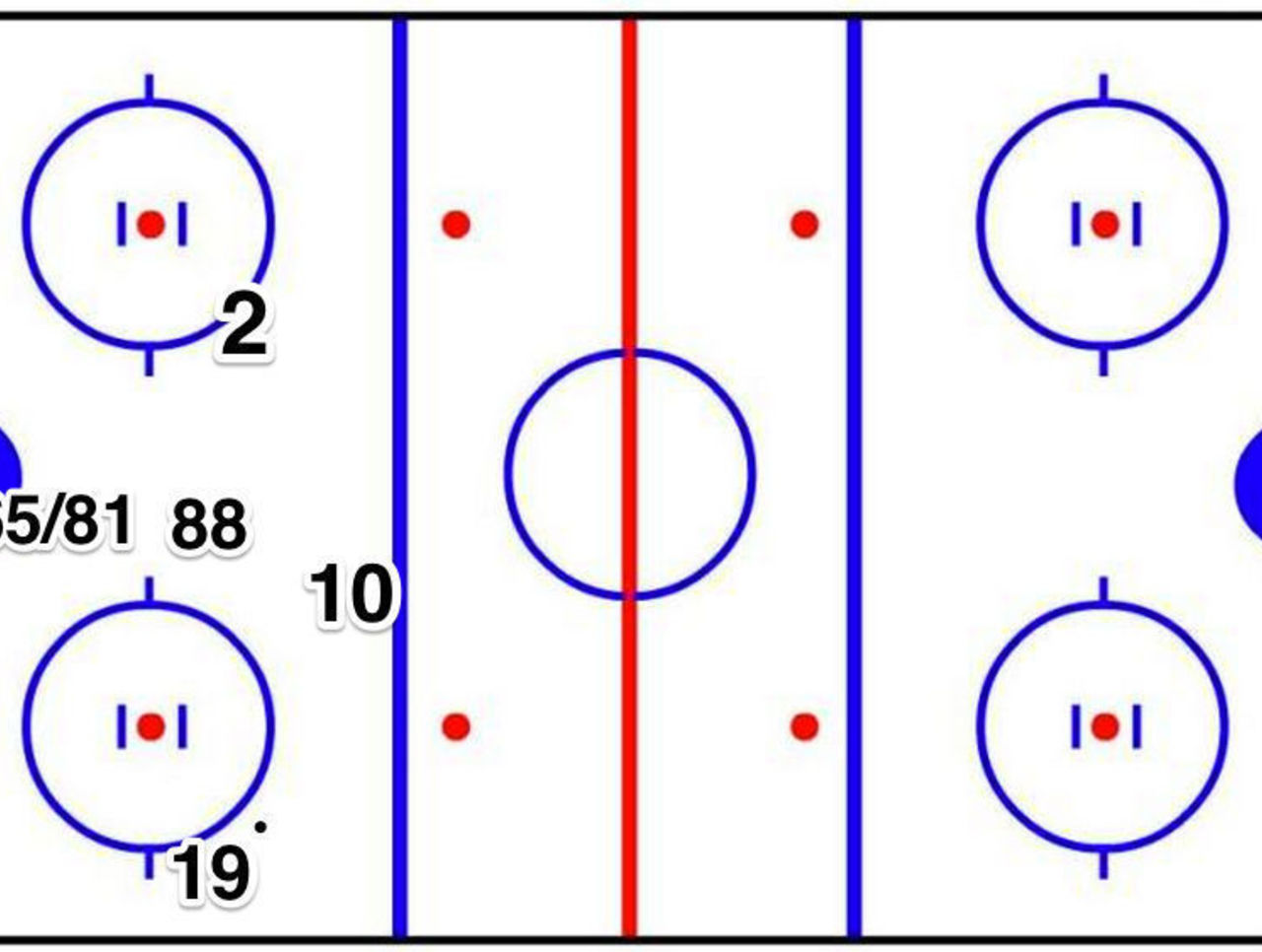Unique Team Traits: We expect more from you, Chicago Blackhawks' power play
theScore’s multi-part team previews include a look at something that separates each team from the pack. From specific breakouts to power-play formations and beyond, Justin Bourne and Thomas Drance hope to highlight something you haven’t noticed in the past.
What we noticed
The Chicago Blackhawks have an unfair stable of talent to use on the power play, yet they haven’t performed much better than average
It doesn’t make a ton of sense. The Blackhawks boast one of the league's best offensive defensemen in Duncan Keith, an ace two-way center in Jonathan Toews, and world-class finishers in Patrick Sharp and Patrick Kane, and you’re telling me they can’t generate more shot volume than Columbus when up a man? Chicago, which also utilizes Marian friggin’ Hossa on its second power-play unit, puts fewer pucks on net at 5-on-4 than Phoenix, Carolina and Ottawa?
Too many cooks spoil the broth? Are they using wrong-handed Nerf sticks? Is coach Joel Quenneville’s system no good?
SPOILER ALERT: It’s the last one.
But first …
The numbers

Chicago's inexplicable struggles with the man advantage have persisted for several years. Last season the Blackhawks actually had their best year on the power play since 2010-11 - the last season in which they employed Brian Campbell - finishing 10th in the NHL with a PP conversion rate of 19.5 percent. That’s not awful, we’ll give you that. And hey, they scored 50 goals on the power play in 2013-14, tied with eight other teams for seventh in the league, which either makes them only six goals away from being a top-five team with the man advantage, or a single goal above average. However you wanna spin it.
In reality, they killed it at 5-on-3. They were one of three teams to bury five times in those situations, which means the Blackhawks only scored 45 total goals when up a single man - tied with four teams for 10th. Now we’re getting into “meh” territory, and it gets worse.
During the lockout-shortened season they posted the 27th-best shot rate when up 5-on-4. Last year they climbed all the way to 18th - wowee - by putting up 50.7 shots on net per 60 minutes, which I guess is better than their three-year total of 22nd.
Chicago’s conversion numbers don’t look bad as a team thanks to a shooting percentage of 13.2 in those situations, but man, some of the personal stat lines from bonafide stars are ghastly.
At 5-on-5, Patrick Kane is a stud. Over the past four years, he’s fourth in the NHL at generating primary assists. Up 5-on-4, as the puck distributor, he’s 65th. When they’re up a guy, he’s also 57th in shots per 60, and 51st in goals per 60. That’s nothing special for a guy who dominates even-strength hockey.
Over the past three seasons, Jonathan Toews is 115th in points per 60 with the man advantage. The guy is fifth over that time at even strength.
And it’s throughout the line-up. Sharp goes from 20th at even strength to 52nd when they’re up a man. Keith is sixth at even strength, but 23rd on the power play. Hossa is 33rd at points per 60 at evens, 119th on the power play.
You get the point.
The breakdown

There aren’t many opportunities to criticize the Blackhawks or coach Quenneville, so let’s go all-in.
Their power-play setup is awful. Flat-out awful.
Here’s the thing: certain guys run the power play. They decide where the puck goes. They touch it a lot, and you hope they turn that into lots of shots. On Chicago, that’s Kane (wall), Sharp (point) and Keith (point). And they have those guys set up in way that zero of them are in position for a good one-timer.
My thoughts on that?
Here's their set-up.

The only players who can take one at all are Kane, who’s shooting through the overload traffic from the wall, and Sharp, who’s a machine built to score from the soft spot in the middle of a penalty kill; you don’t want him shooting from out here when you could have him sitting in the slot.

I mean, nice screen and all, but that’s no good in the big picture. At the very least, you’d like to see Sharp and Keith swap spots so he could shoot from the Ovechkin/Stamkos spot.
Because, what the hell is Duncan Keith going to do with this puck?

He’s got no options.
So you send it out wide to him, and now he’s taking a shot with his stick on the wall, the way Sharp is on the other side.

So, he dutifully has to run it back to another guy who can’t one-time the pass, and the puck goes back to the half-wall, where it was before this futile exercise.

Toews has popped into the slot there for Kane (above), but okay … he’s a lefty. What good is that?
So, to bring it back to the first GIF, you can see how this beomes déjà vu. Kane runs it down to the goal line to Toews, who basically has to try to stuff it or give it back. There’s no guy in the slot in the middle to pull the defenders away so …

… Now ”maybe run it up high to Sharp?” is basically all Kane has after recovering the puck, once again.
As we saw with Carolina’s shoddy PP, handedness is key, and having a guy in the slot in the overload - not the goal line - is essential.
Chicago could take this exact unit, jam it on the other side and have Toews on the wall, and either Kane or Hossa in the middle, and they'd be laughing.

Whoever’s in front can drop down as a goal-line option if a pressure release is needed, and now you've got one-timers galore. Both Sharp and Keith can nuke it from each other. Toews can slap it from Sharp. Kane can bomb it from Toews. Kane can rip it from a goal line pass.
You still have the same skill on the ice, only now with options and shooters. (There really is a ton of fixes. You could put Sharp on the half-wall, Kane at the point, Hossa in the middle and Toews in front if you really want one-timers everywhere. The point is, you can easily do this better by simply flipping the overload to the other side.)
Chicago can overcome a setup as bad as Carolina’s and come out average or better because it has the personnel. But there’s no doubt the Blackhawks haven’t been put in optimal positions to succeed.
HEADLINES
- Jets win Presidents' Trophy for 1st time in franchise history
- De Haan: 'It's f----d' how I've been treated by Rangers
- For young on-ice officials, the learning curve is steep but rewarding
- Flames beat the Sharks to bolster their late playoff push
- Fantilli scores twice to keep Blue Jackets' playoff hopes alive